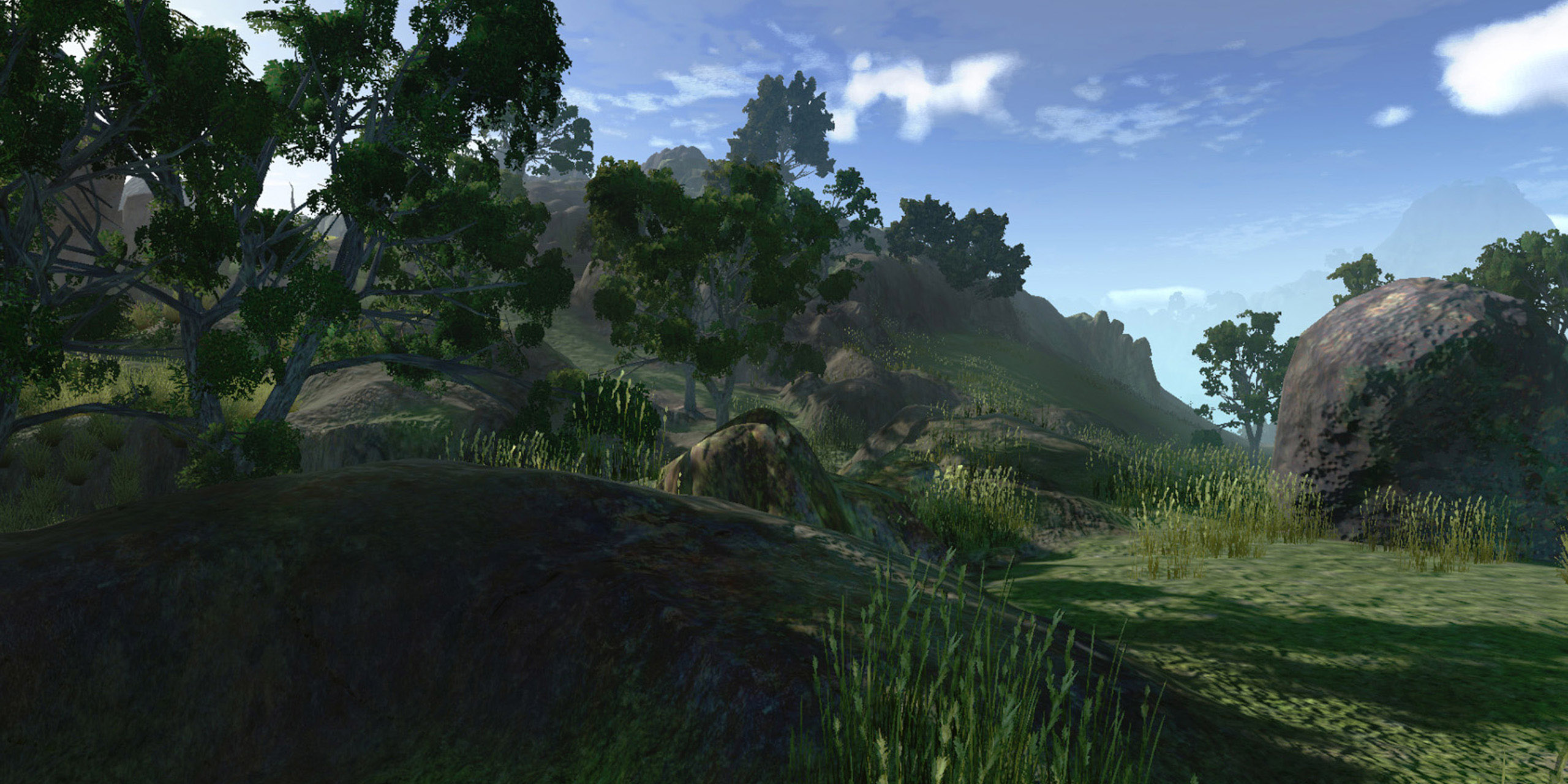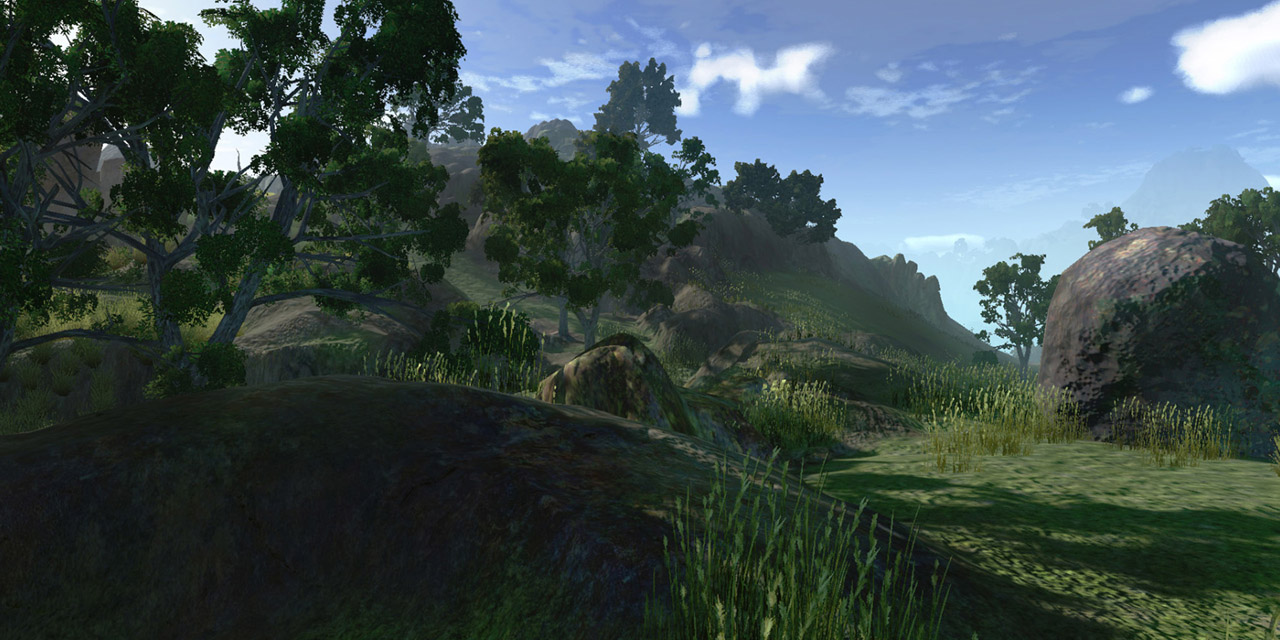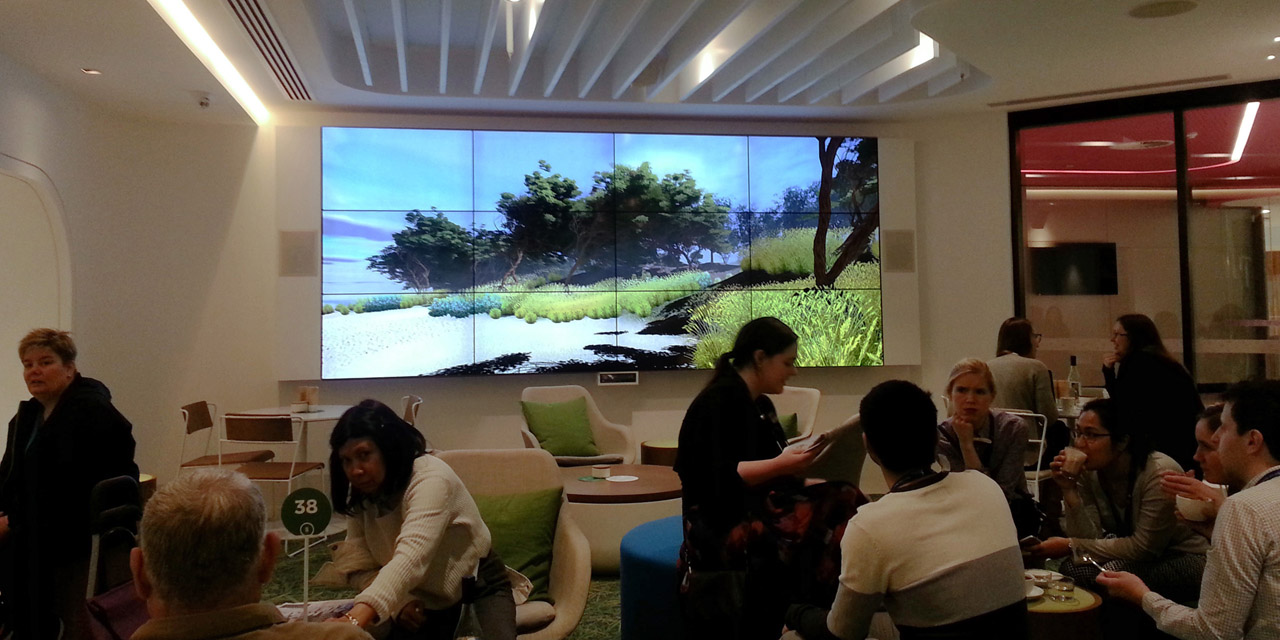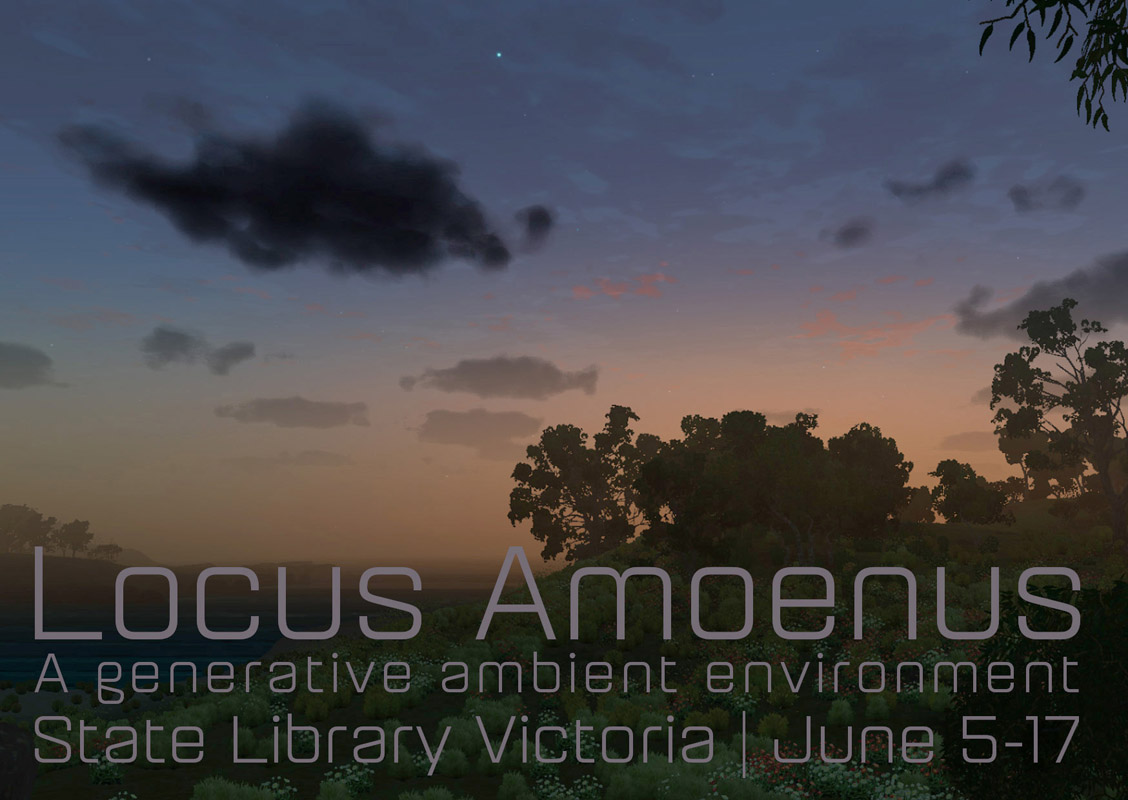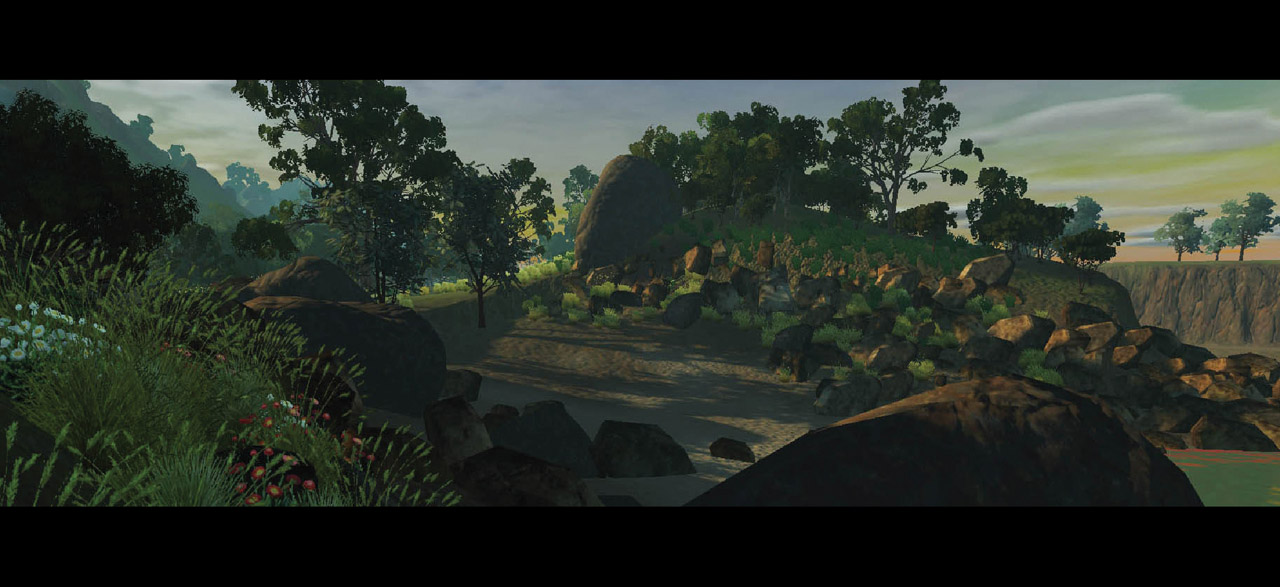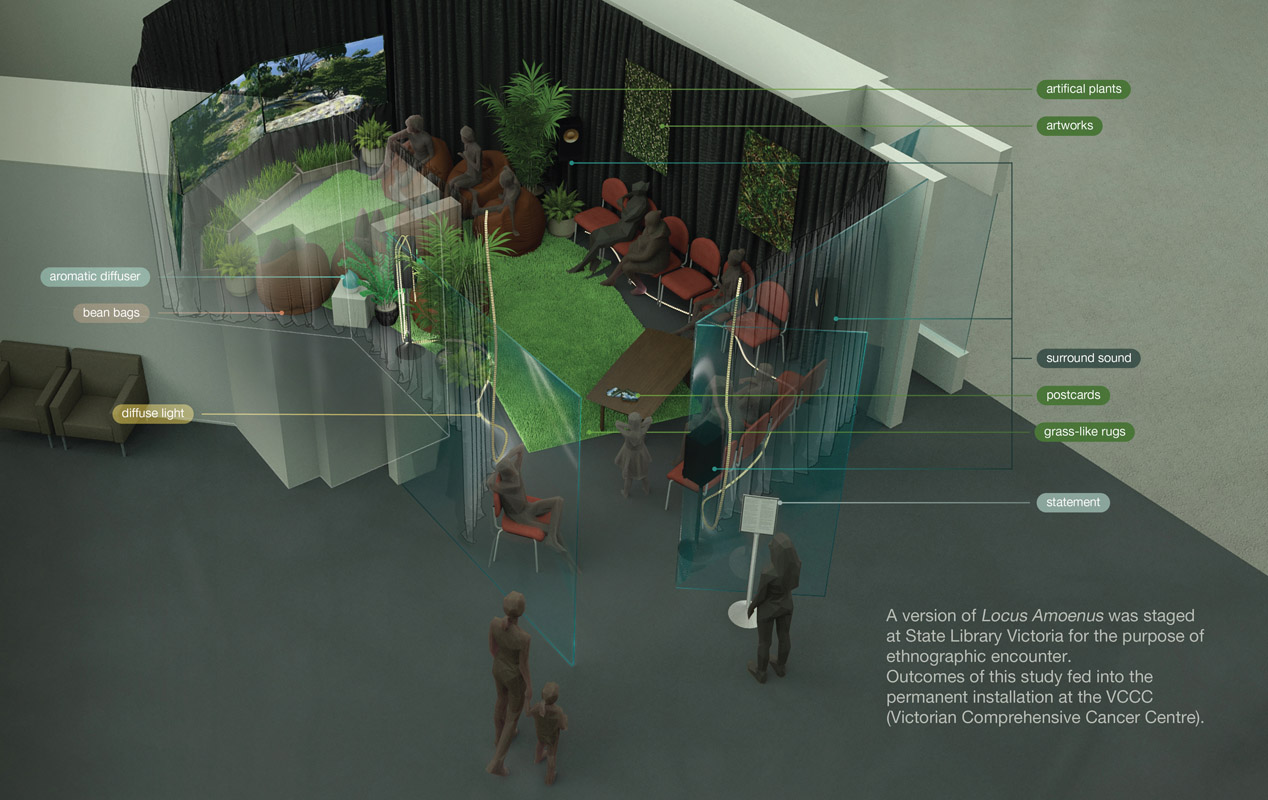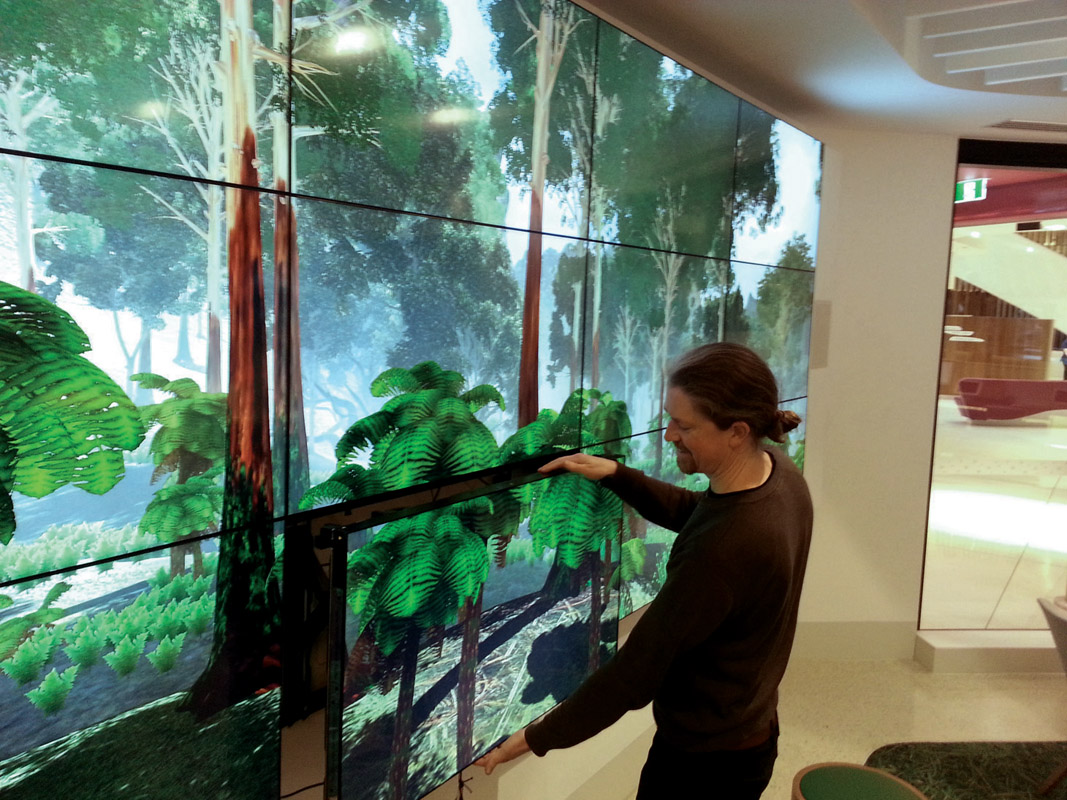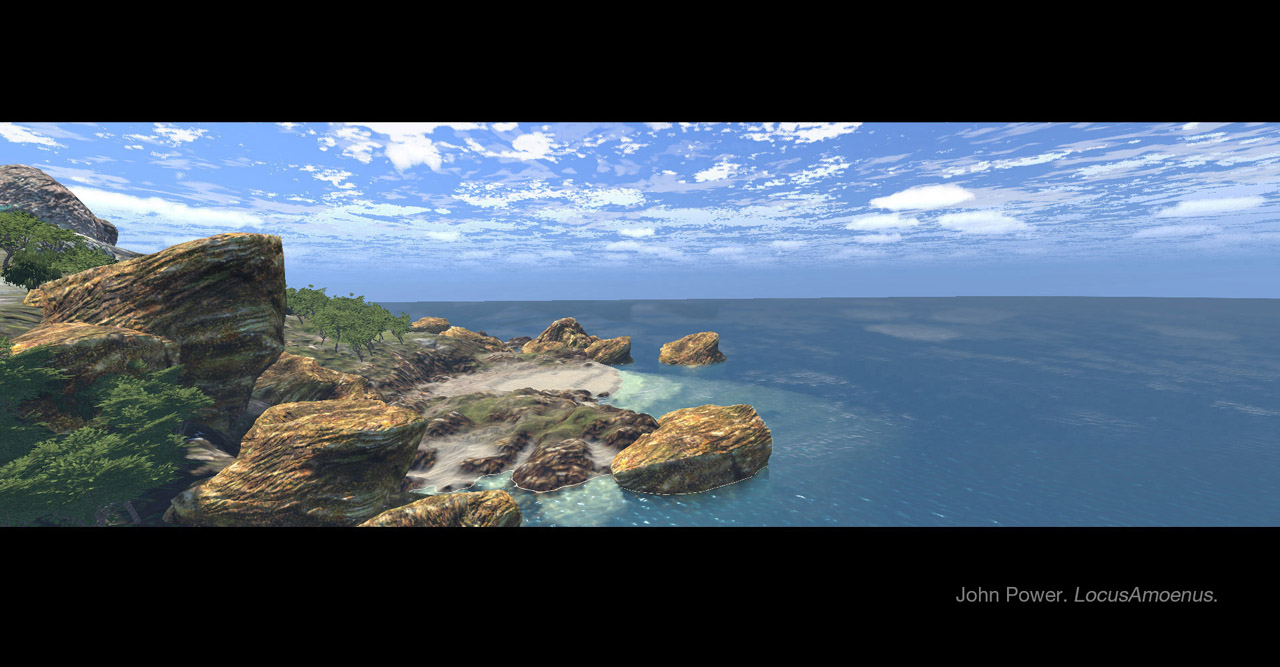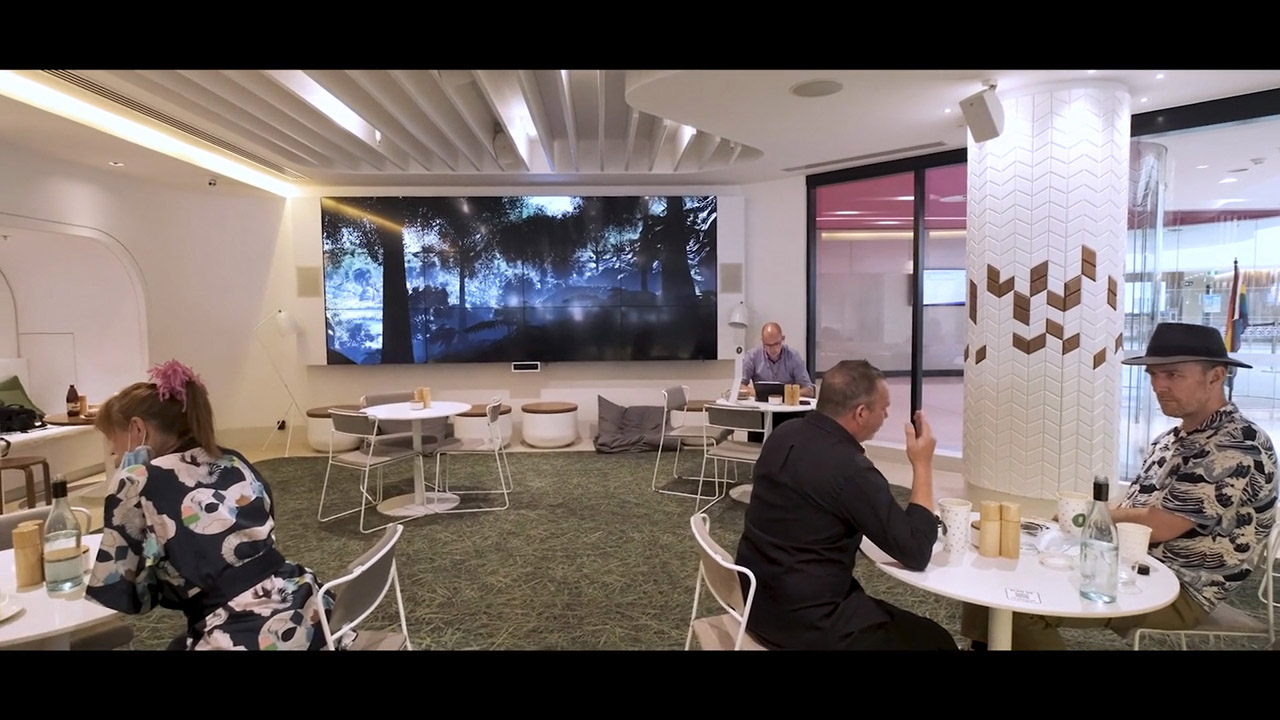Locus Amoenus was developed within a PhD by project at RMIT University in the School of Media and Communication. To undertake this project, I needed to understand how generative methods used with situated media (permanently installed screens) in public space could be developed as a social amenity.
I explored the intersection between Calm Technology and Biophilic Patterns as a means of firstly taking the idea of attention and calm as a guiding principle, and secondly of experimenting with designed patterns in real-world contexts.
This theoretical approach fits within a humanist discourse of third wave Human Computer Interaction (HCI), and as such was further justified as contributing to what design theorist Malcolm McCullough describes as an "ambient commons" (McCullough, 2013). McCullough's notion of an ambient commons calls for a "right to attention" in public space in the age of ubiquitous screen media.
The project was developed with interdisciplinary research methods that included ethnographic encounter (using remote observation of 1,169 participants and 88 semi-structured interviews) conducted over two weeks at State Library Victoria. This process enabled refinement of the permanently installed version of the installation at the VCCC.
The work has been expertly finished and installed, and has been functioning in-situ in the VCCC producing some 25,000 hours of original generative content reflecting the real-time weather of the Parkville locale overlain on representations of natural ecologies of Victoria.
The brief was met and the work saw the enthusiastic reception of the clients and those who use and work in the space during the week; a diverse but very particular social setting that accommodates visitors with complex care needs and their loved ones, medical professionals, research scientists, hospital workers, hospitality workers, administrators, and staff.
The work has exceeded the brief in developing and documenting a design framework for staging generative ambient public screens.

